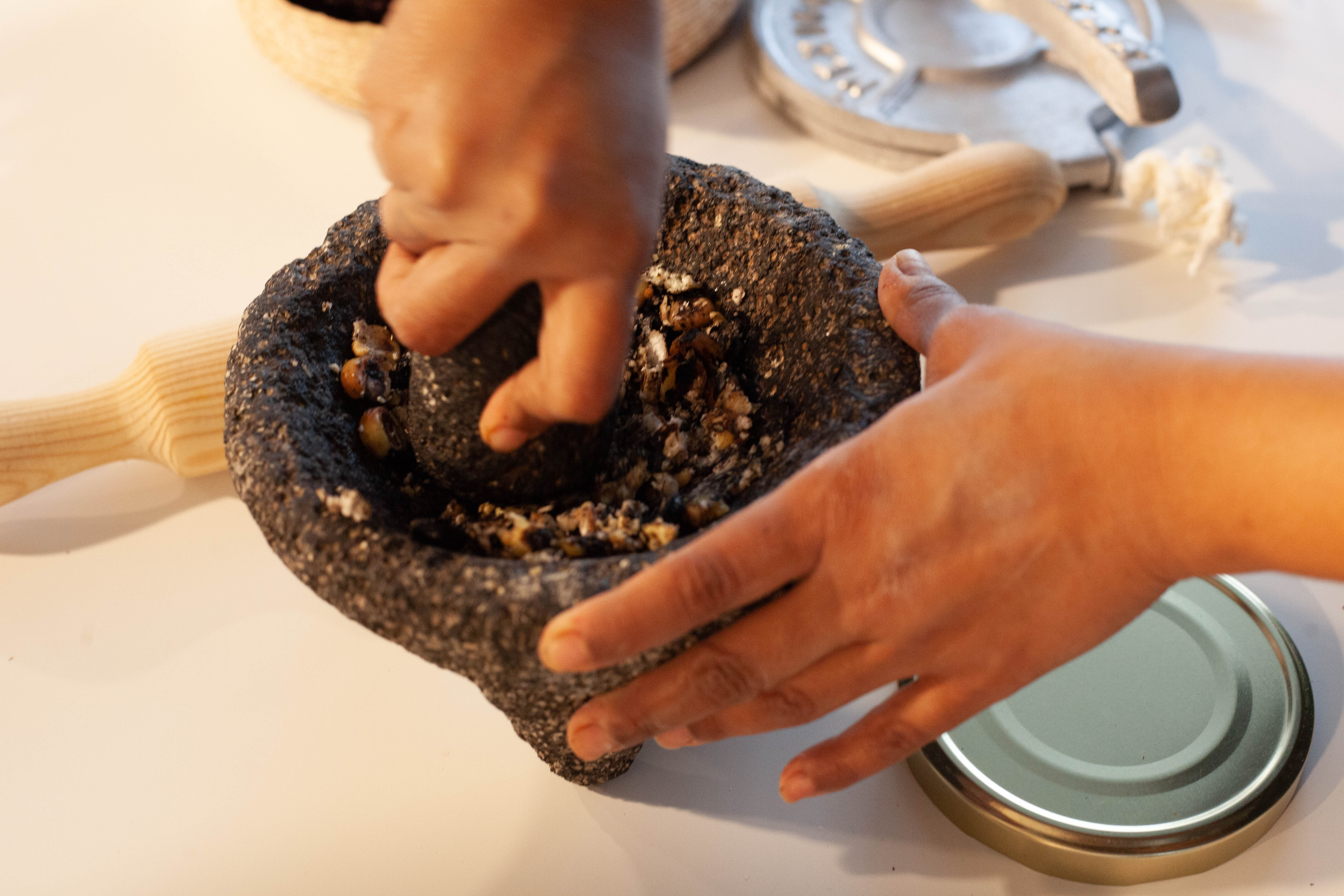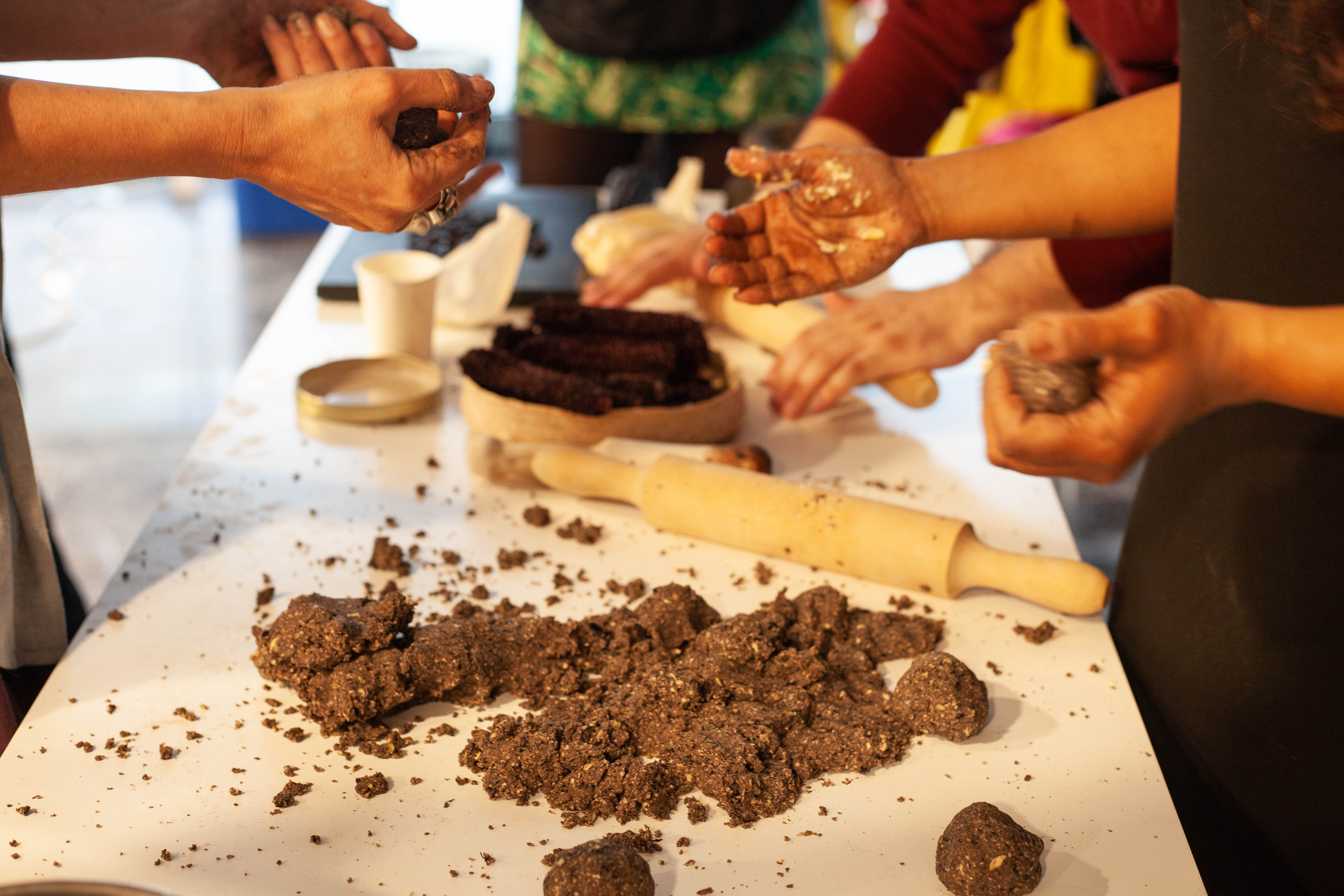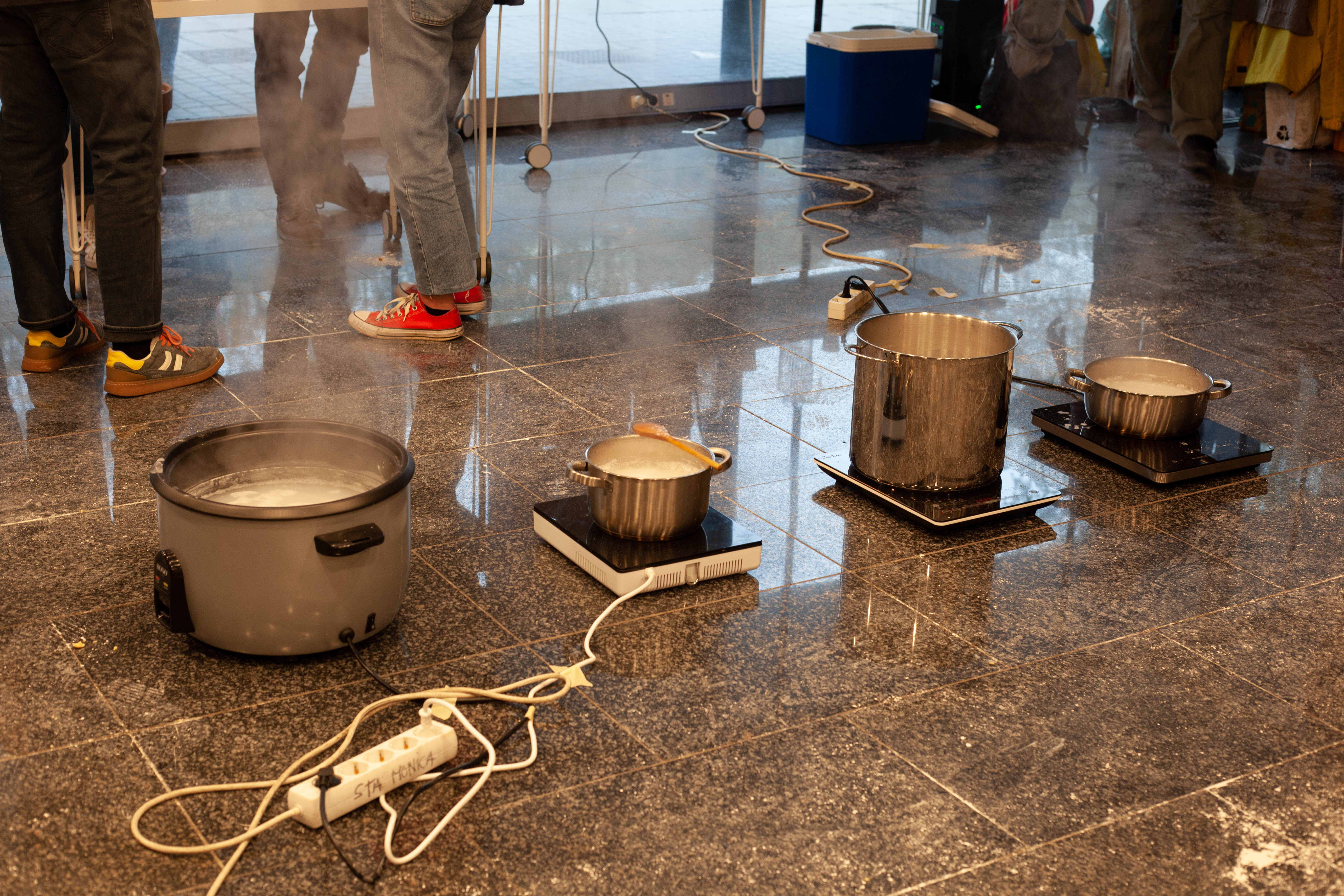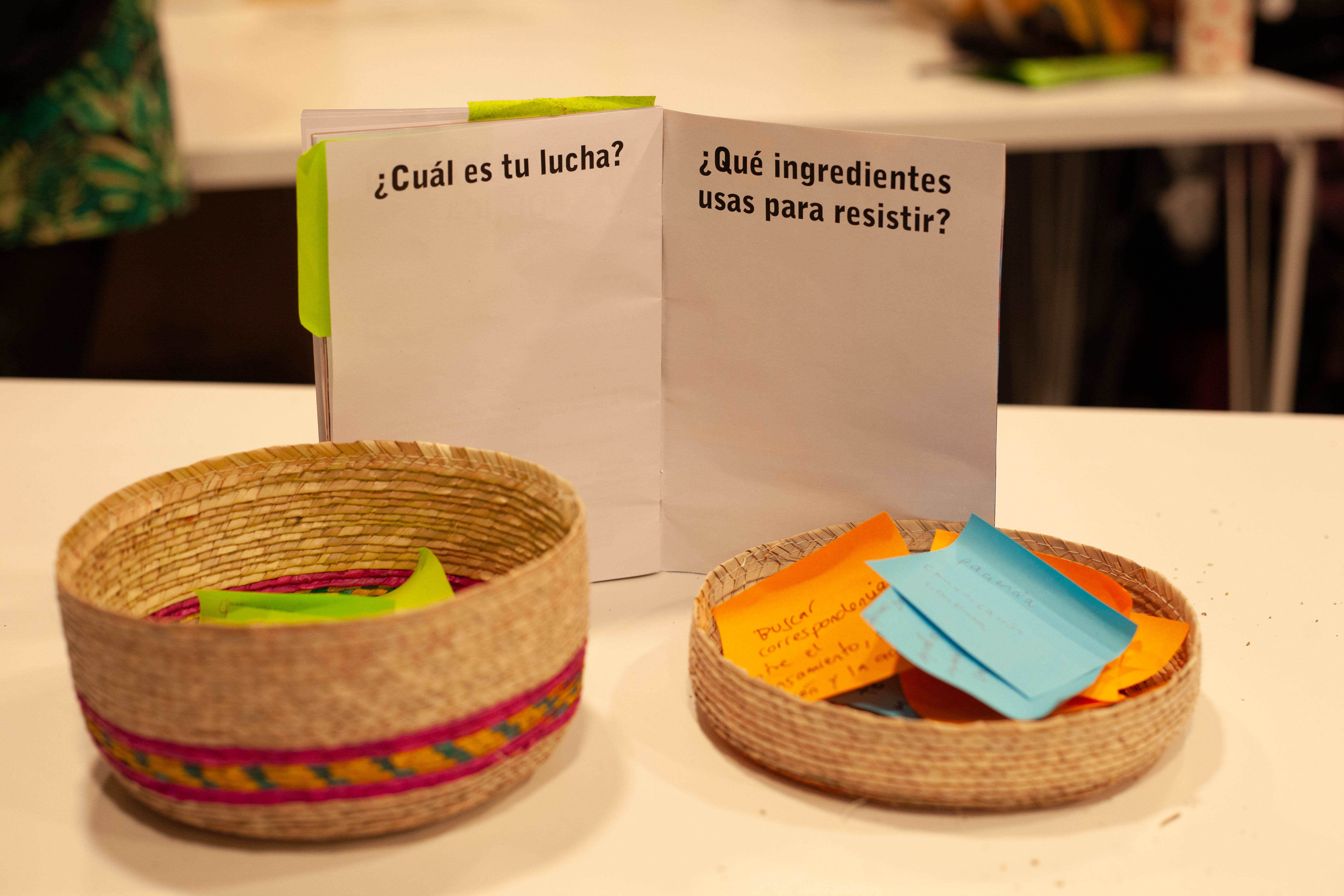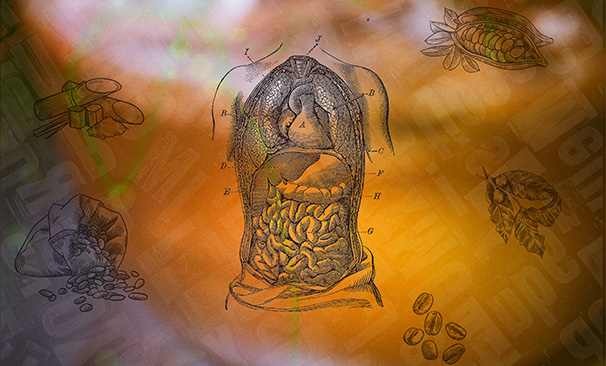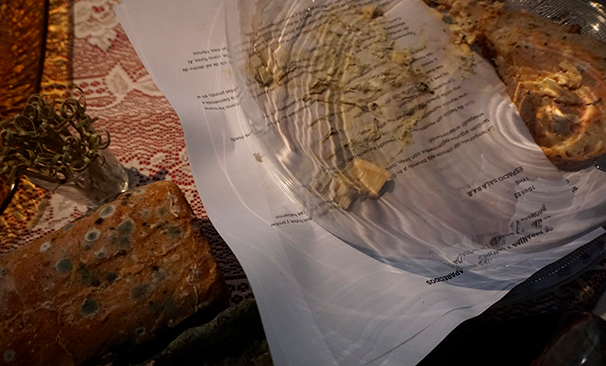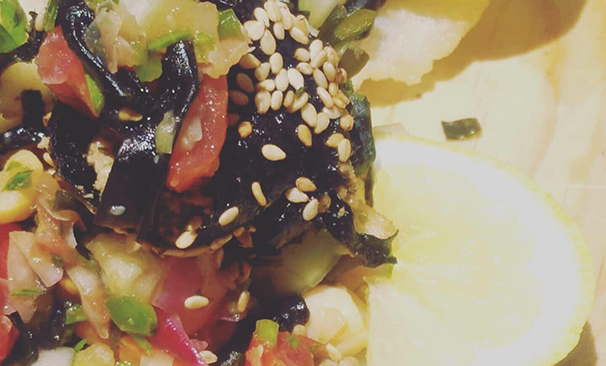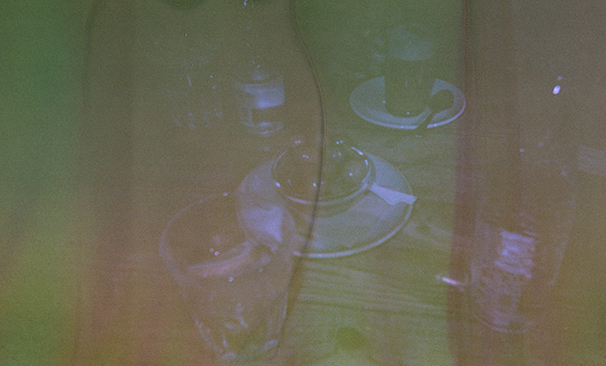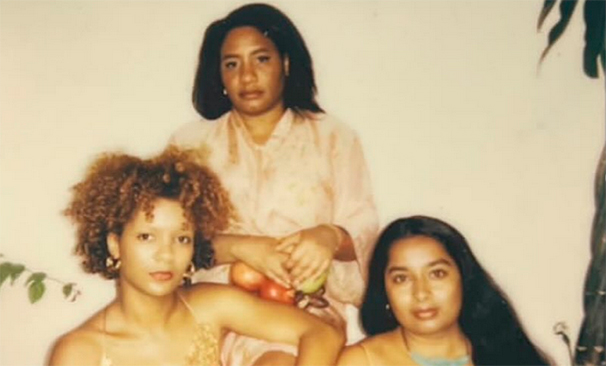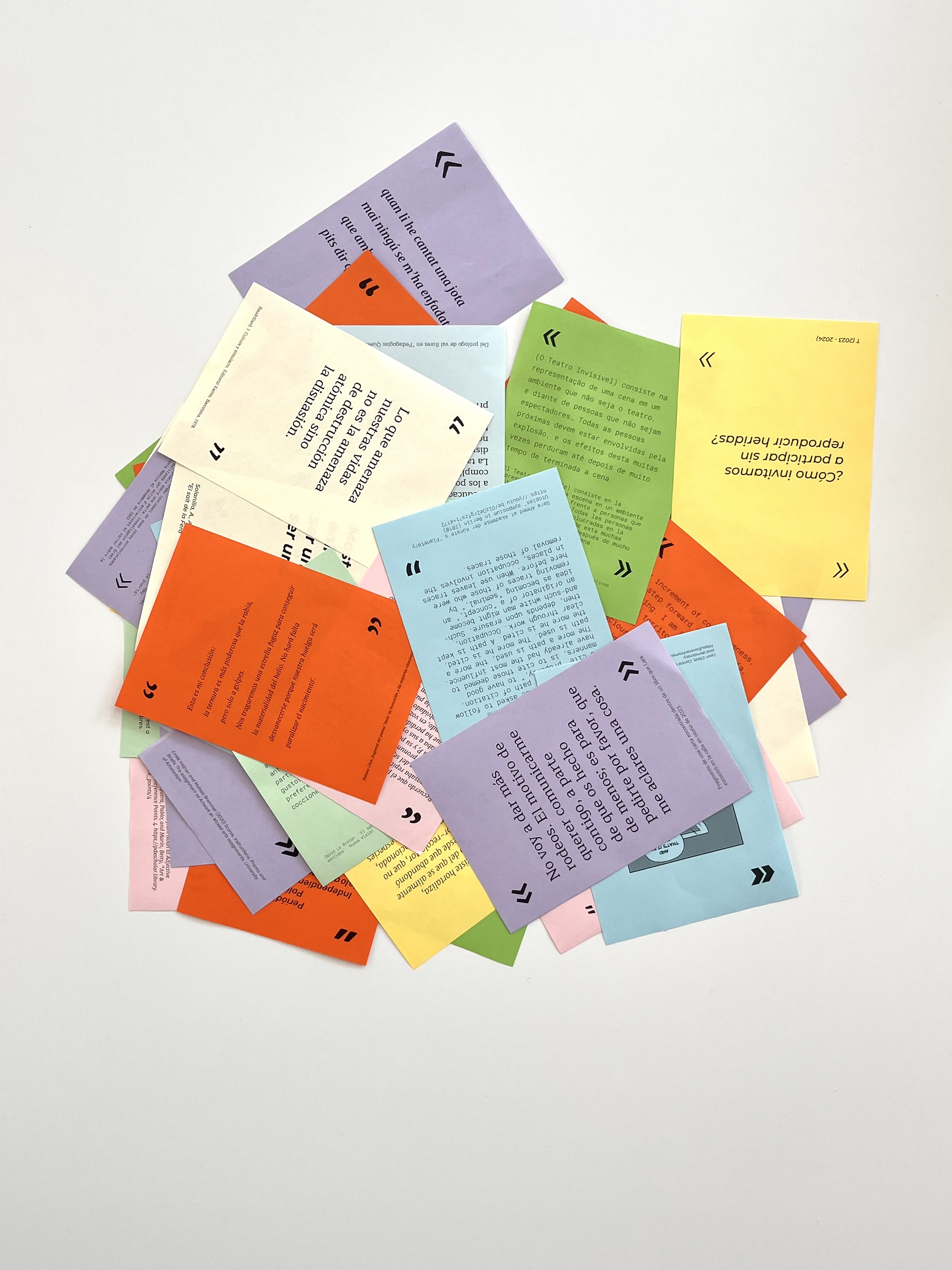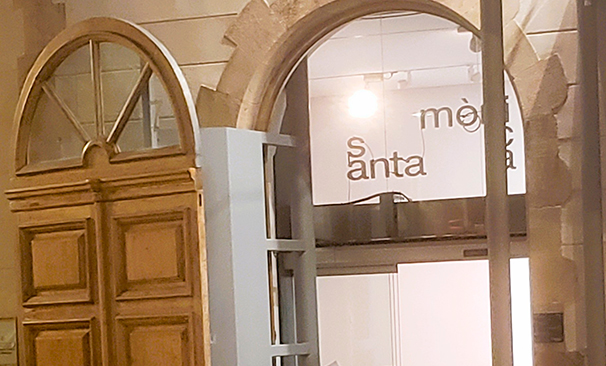What are you looking for?
You might be looking for...
Cuina ambulant #3
A device for cooking, sharing, imagining and tasting flavours together
Abstract
Cuina ambulant #3 is a space for processual experimentation in which different collectives are invited to cook, share references and imagine and taste flavours together.
It is a very simple mobile device that allows cooking to spill out into the centre and imbues it with smells and flavours, inviting you to chop, fry, taste and get your hands dirty. Expanding this community cooking space (and time) is a tool to discuss what happens and what doesn't happen when cooking in an art centre: the questions raised by the different exhibitions, the themes that run through the centre and the groups invited. It also aims to be a loudspeaker and a stage for unique gastronomic projects to find their place.
The initial idea for Cuina ambulant originally came from the 22-23 residency of the Gastronomy Guild 22-23, formed by Natàlia Carminati, Sonia Vilar and Carolina Zerpa. The aim was to build a portable kitchen to be able to carry out actions in and around different spaces. The prototype initially developed was designed so that this kitchen could be made available to the different organisations and needs of the neighbourhood. The project also wanted to explore what happens – and what doesn't happen – when cooking in an art centre.
That year, a lot of work was done on the mobile kitchen system in the different areas of the centre, and various forms of socialisation were explored. The aim was to investigate, explore and generate spaces around food, the ritual of the shared meal, culinary practice and its relational nature. Likewise, the aim was to generate gastronomic experiences that would become part of the centre's everyday life, to explore the possibilities offered by food-related processes and to encourage participation, among other objectives.
This edition, on the other hand, has focused on exploring Cuina ambulant as a device that enables the activation of certain lines of thought related to colonialism, migration and gastronomy as a tool for the resistance of peoples' identities.
BACKGROUND
- A team of people.
- A large space that can accommodate a group of people and materials and where cooking is not normally done. Ideally, the space should be able to host other exhibitions or artistic actions that allow a dialogue with something culinary.
- Optionally, a collective that carries out cultural actions focused on gastronomy.
- Various ingredients and materials (electronic, furniture, culinary and kitchenware), according to the needs of the proposed action.
- A space to store the materials the days before the action and a space to wash the utensils that have been used once the action is finished.
INGREDIENTS
1. Create a working team.
2. Define the action together, taking into account the space where it will take place (and whether it is in dialogue with any other artistic work), the invited projects (if any), the target audience, the proposal to be cooked and how it will be done, and its technical and material needs.
3. Contact the people in charge of the space and find out what procedures and permissions are necessary to reserve it and to be able to carry out a culinary event such as the one you are planning. Launch the necessary procedures taking into account the deadlines.
4. Make a list of all internal material needed from the centre: tables, chairs, plugs and wiring, microphones or sound equipment, etc. Reserve what you need.
5. Make a second list of all the external material you will need: complementary machinery and utensils, ingredients, tableware and so on. Draw up a budget and organise the purchase or rental of materials, coordinate delivery schedules with suppliers and space managers, establish methods of payment for materials, and make all the necessary arrangements.
6. Publicise the action, according to the audience you have chosen. If necessary, design and produce posters, brochures or other materials as appropriate.
7. On the day of the action, prepare all the necessary materials in good time, set up tables and materials, organise waste management, connect to the power grid, have water available, welcome partner projects (if any) and pay attention to all needs. Also ensure that schedules are adhered to at all times.
8. Encourage public participation during the event.
9. Once the food is cooked, serve it and make sure that everyone who wants a taste can have one. Don't forget to also save some servings for the technical team, working group members and people from the guest projects, if any.
10. Once the action is over, thank everyone involved for their participation, pick up the devices, clean all utensils and manage waste and leftovers. Make sure the space is clean and all material is in place.
STEPS
Make sure that the invited collective has an agreed time to explain their project.
In order not to leave anyone behind, it is important that the menus and dishes we propose always have a vegan and, as far as possible, gluten-free alternative.
Please note that guests or participants leading the cooking event must have a food handler's licence. It is also necessary to establish hand-cleaning protocols for participants in pre-cooking steps.
If possible, make recordings of the action. In case you have a guest collective, please remember to send them these recordings as well (thanking them for their role in the event).
RECOMMENDATIONS AND ADVICE
Materialisations
Gastronomy Guild Prototype 23-24
Alexandra Laudo, Yazel Parra and Laura Torres
Participants:
Mohammad Alsharqawi; Columba Zavala, Lina Ruiz and Mariana Alva (Las Jamaiconas); Agnes Essonti Luque, Lizette Nin and Roshni Kavate (Mango + Okra).
Acknowledgements:
Artists and curators of the exhibition The Other Side, the general public and other members of Les Mòniques.
CRÈDITS DEL PROTOTIP 23-24
* This recipe is based on documentation of the entire process. For more details, contact us at santamonica@gencat.cat.
